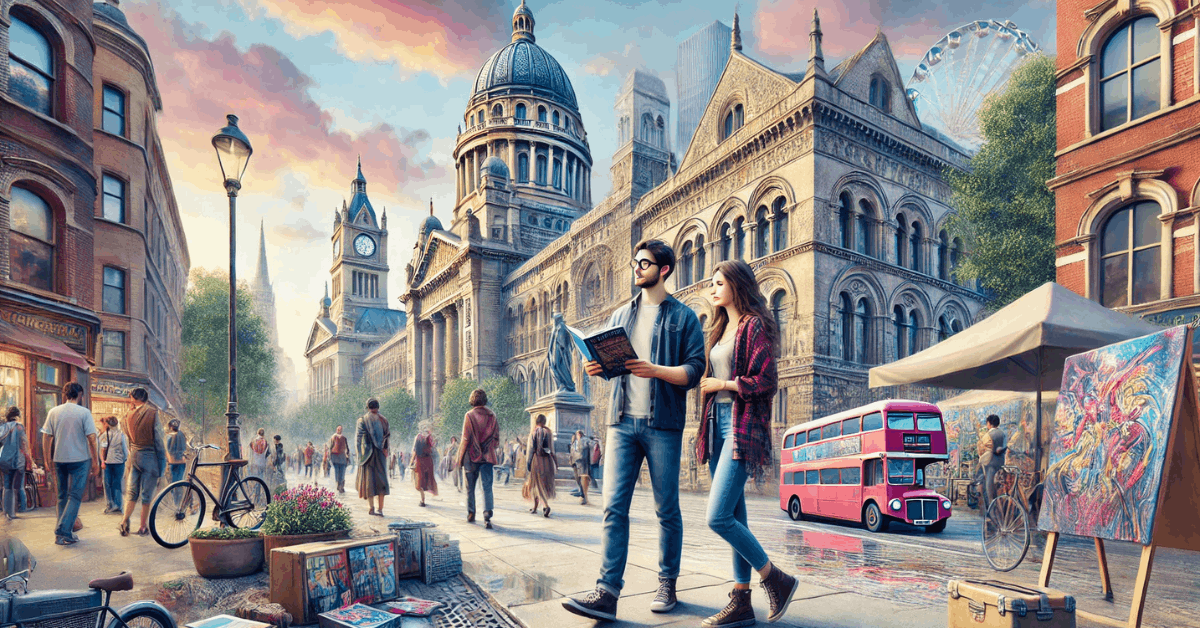Visiting a mosque can be an incredibly enlightening and rewarding experience for people of all faiths and backgrounds. As one of the most significant places of worship for Muslims worldwide, mosques offer visitors a chance to learn more about Islamic culture, traditions, and beliefs.
This article will provide a comprehensive guide to visiting a mosque, including what to expect, how to dress appropriately, and what etiquette to observe. Whether you're a seasoned traveler or simply curious about other religions and cultures, this article will provide valuable insights and tips to help you make the most of your mosque visit.
Take a moment to settle in and read on to gain valuable insights and tips on visiting a mosque.
5 Reasons Why Visiting a Mosque is Important
Visiting a mosque is essential to understanding Islamic culture, traditions, and beliefs. Here are some of the most important reasons why you should see a mosque:
- Gain Insight Into Islamic Culture: Visiting a mosque can provide a unique opportunity to gain insight into Islamic culture, traditions, and beliefs. By experiencing Islamic practices firsthand, visitors can better understand and appreciate Islam.
- Promote Interfaith Understanding: visiting a mosque can foster interfaith understanding and promote tolerance and respect for people of different religions and backgrounds. It can also help to break down stereotypes and promote a more inclusive society.
- Learn About Islamic Architecture: mosques are not just places of worship but also architectural marvels. Visitors can learn about the history and significance of Islamic architecture, including the use of intricate patterns, calligraphy, and domes.
- Connect With the Local Muslim Community: visiting a mosque can also provide an opportunity to connect with the local Muslim community. It can help to build bridges and develop meaningful relationships with people from different walks of life.
- Seek Spiritual Enlightenment: for Muslims, visiting a mosque is essential to their spiritual journey. Visitors can experience the tranquility and peacefulness of the mosque and seek spiritual enlightenment.
In summary, visiting a mosque can be a transformative experience that can broaden your understanding of Islam, promote interfaith understanding, and connect you with the local Muslim community.
Exploring the Beauty and Significance of Four Iconic Mosques
Visiting a mosque is a unique opportunity to experience the beauty and significance of Islamic culture and traditions. From stunning architectural designs to intricate calligraphy and mosaics, mosques offer a glimpse into Islam's rich history and importance.
Let's explore the beauty and significance of four iconic mosques worldwide.
Sultan Ahmed Mosque
The Sultan Ahmed Mosque, popularly understood as the Blue Mosque, is a historical mosque in Istanbul, Turkey. Built in the early 17th century, it is a masterpiece of Ottoman architecture known for its stunning blue tiles and unique design.
The mosque's central dome, six minarets, and eight secondary domes make it one of the most recognizable landmarks in Istanbul. Visitors can tour the mosque and marvel at the intricate calligraphy, stained glass windows, and beautiful mosaics that adorn the interior.
The mosque's touring hours are typically from 9 a.m. to 6 p.m. visitors are advised to dress modestly and remove their shoes before entering. The Blue Mosque is a must-see destination for anyone visiting Istanbul and is a testament to the beauty and significance of Islamic architecture.
Camlica Mosque in Istanbul, Turkey
Camlica Mosque is a new mosque on the Asian side of Istanbul, Turkey. It is one of the largest mosques in Turkey and can accommodate up to 63,000 worshippers at a time.
The mosque's stunning design and impressive size make it a popular destination for Istanbul visitors. From its terraces, visitors can take in breathtaking views of the city.
The mosque is available to visitors of all faiths, and visitors are advised to dress modestly and observe mosque etiquette. Visiting Camlica Mosque is a unique opportunity to experience modern Islamic architecture and culture and to enjoy panoramic views of Istanbul.
Masjid Nabawi in Medina, Saudi Arabia
Masjid Nabawi, known as the Prophet's Mosque, is a historic mosque in Medina, Saudi Arabia. It is considered the second holiest site in Islam after the Masjid al-Haram in Mecca and is a significant place of worship for Muslims worldwide.
The mosque features a large central courtyard, several domes, and minarets. It is adorned with intricate calligraphy, geometric patterns, and beautiful Islamic art. It is open to visitors of all faiths, but non-Muslims are not allowed to enter the prayer area.
Visitors can experience the mosque's tranquility and peacefulness and seek spiritual enlightenment. Visiting Masjid Nabawi is a unique opportunity to learn about Islamic culture, traditions, and beliefs and to connect with the local Muslim community.
Sheikh Zayed Grand Mosque in Abu Dhabi, UAE
The Sheikh Zayed Grand Mosque is one of the world's largest and most impressive mosques in Abu Dhabi, UAE. It is named after Sheikh Zayed bin Sultan Al Nahyan, the founder and first President of the UAE.
The mosque features a stunning blend of Islamic, Mughal, and Moorish architecture and can accommodate up to 41,000 worshippers at a time. Visitors can tour the mosque and marvel at the intricate details of the architecture, including the white marble domes and minarets, reflective pools, and floral designs.
The mosque is available to guests of all faiths, and guided tours are available for those who want to learn more about Islamic culture and traditions. Visitors are advised to dress modestly and observe mosque etiquette.
The mosque is open from Saturday to Thursday, with visiting hours from 9 a.m. to 10 p.m. and on Fridays from 4:30 p.m. to 10 p.m. Visiting the Sheikh Zayed Grand Mosque is a unique opportunity to experience the grandeur and beauty of Islamic architecture and learn more about the culture and traditions of the UAE.
Also read: Know when you visit a mosque.
Understanding Islamic Traditions and Customs: Guidelines for Non-Muslim Visitors
Understanding Islamic traditions and customs is essential for non-Muslim visitors to ensure a respectful and meaningful mosque visit. Islamic traditions and customs are an integral component of the Islamic faith and reflect the cultural and social norms of the Muslim community.
Visitors can show appreciation for Islamic culture and traditions by understanding and respecting these traditions.
One important aspect of Islamic tradition is the importance of modesty and dress code. Visitors should dress modestly and conservatively, covering their arms, legs, and head. Shoes should also be removed before entering the mosque to maintain cleanliness and respect for the place of worship.
Another essential Islamic tradition is the use of prayer mats and the direction of prayer. Visitors should avoid stepping on or disturbing prayer mats used during daily prayers. It's also essential to respect the principle of prayer towards Mecca and avoid standing in the way of those praying.
Islamic customs also emphasize the importance of respect for others and the community. Visitors should avoid loud or disruptive behavior, take photographs without permission, and seek permission before entering prayer areas during prayer time.
Understanding Islamic traditions and customs is crucial for non-Muslim visitors to ensure a mosque visit is characterized by respect and significance. By respecting Islamic culture and traditions, visitors can help foster greater understanding and appreciation of the Muslim community and create a positive experience for all.
Why Dress Code and Shoe Removal Are Important for Mosque Visits
Dress code and shoe removal are two critical aspects of mosque visits rooted in Islamic traditions and customs. These guidelines serve as a way of showing respect and reverence for the place of worship and the Islamic faith.
Dressing modestly is an essential aspect of Islamic tradition and is expected of both men and women during mosque visits. Clothing should cover the arms, legs, and head, not revealing or tight-fitting. It shows respect for the sacred space and the beliefs and practices of the Islamic community.
Shoe removal is also essential to mosque visits, as it symbolizes purifying oneself before entering the mosque. This is done to maintain cleanliness and respect for the place of worship. Visitors should also ensure their socks or feet are clean before entering the mosque.
By following these guidelines, visitors can respect the Islamic faith and traditions and help create a positive and meaningful mosque visit experience for everyone.
It's important to remember that a mosque is a sacred space for the Islamic community. By following these guidelines, visitors can show appreciation for the Muslim culture and traditions.
The Importance of Silence and Respectful Behavior During Mosque Visits
Silence and respectful behavior are essential during mosque visits. They help to create a peaceful and respectful environment, allow for concentration during prayer, demonstrate respect for the Islamic community, and promote a positive and welcoming environment for people of all faiths.
By showing respect and maintaining a peaceful atmosphere, visitors can help foster a greater understanding and appreciation of Islamic culture and traditions and promote a more inclusive and tolerant society.
Here are the reasons why silence and respectful behavior are important during mosque visits:
- Maintaining a peaceful and respectful environment: Mosques are places of worship and reflection for the Islamic community. Honoring the space and respecting the community's beliefs and practices is essential.
- Silence during mosque visits is vital to allowing for concentration during prayer. Visitors should avoid loud talking, music, or other disruptive behavior that may disturb those praying.
- Demonstrating respect for the Islamic community: respectful behavior during mosque visits shows appreciation for the Islamic culture and traditions. It also helps to create a positive and meaningful experience for everyone, promoting greater understanding and respect between different faith communities.
- Creating a positive and welcoming environment: visitors who demonstrate respectful behavior during mosque visits can help to create a positive and welcoming environment for people of all faiths. It can promote a greater understanding and appreciation of Islamic culture and traditions, helping to foster a more inclusive and tolerant society.
By showing respect and maintaining a peaceful and respectful environment during mosque visits, visitors can help create a positive and meaningful experience for everyone.
Silence and respectful behavior are essential to show appreciation for Islamic culture and traditions and foster greater understanding and respect between faith communities.
How to Greet Others and Listen to the Imam During a Mosque Visit
Greeting others and listening to the imam during a mosque visit is essential to showing respect and appreciation for Islamic traditions and customs. Visitors should greet others respectfully by saying "Assalamu alaikum," which means "peace be upon you." It is a standard greeting among Muslims and is a sign of respect and goodwill.
During prayer services, visitors should listen attentively to the imam, who leads the prayer and recites passages from the Quran. It's essential to remain quiet and avoid any distractions during this time.
It's also essential to follow the prayer rituals by standing, bowing, and prostrating with the rest of the congregation. If unsure, it's best to observe and follow the actions of those around you.
It's also essential to respect Islamic symbols such as the Quran, prayer mats, and calligraphy by avoiding stepping on them or touching them without permission.
Visitors can respect and appreciate Islamic traditions and customs by respectfully greeting others and listening attentively to the imam. It can help to create a positive and meaningful mosque visit experience for everyone.
Respectful Mosque Visits: The Ultimate Guide to Dos and Don'ts
Visiting a mosque can be a unique and enriching experience for people of all faiths. Still, it's essential to observe proper etiquette to show respect and appreciation for the place of worship.
To help visitors navigate mosque visits' do's and don'ts, here's a comprehensive guide highlighting the most essential guidelines for respectful and mindful behavior. Whether you're a seasoned traveler or new to mosque visits, following these guidelines will ensure a meaningful and respectful experience for everyone.
The Do's of Visiting a Mosque: 7 Guidelines for Respectful Mosque Visits
Visiting a mosque is an opportunity to learn about Islamic culture and traditions, but it's essential to observe proper etiquette to show respect and appreciation for the place of worship. Here are some do's to keep in mind when visiting a mosque:
- Dress code: when visiting a mosque, it's essential to dress modestly and conservatively. Men should wear long pants and a shirt with sleeves, while women should wear clothing that covers their arms and legs and a headscarf.
- Please remove your shoes. Many mosques require visitors to remove their shoes as a sign of respect and cleanliness. Wear easy-to-remove shoes and store them in the designated area.
- Respect Islamic traditions and customs: mosques are places of worship and are essential to the Islamic community. Visitors should respect Islamic traditions and customs, such as praying or bowing when required, and avoid any behavior that may be seen as disrespectful.
- Silence your phone: mobile phones should be turned off or silent when visiting a mosque. It is vital to maintain a quiet and respectful environment inside the mosque.
- Greet others respectfully: visitors should greet others respectfully when entering or leaving the mosque. It includes saying "Salam" or "Assalamu Alaikum," which means "peace be upon you."
- Listen to the imam: the imam is the mosque's leader and delivers the Friday sermon. Visitors should listen attentively to the imam and follow any instructions given.
- Seek permission before taking photographs: taking photographs is not always permitted inside mosques, and visitors should seek consent from the mosque staff before taking any photos or videos. It's essential to respect the mosque's sanctity and avoid any behavior that may be seen as disrespectful.
Mosque Etiquette: 7 Don'ts to Remember When Visiting a Mosque
When visiting a mosque, you must be mindful of what you shouldn't do to show respect and appreciation for the place of worship. Here are some don'ts to keep in mind when visiting a mosque:
- Avoid wearing revealing clothing: sightseers should avoid wearing clothing that is too revealing or tight-fitting. It includes short shorts, sleeveless tops, and tight pants.
- Do not bring food or drinks: food and beverages are not allowed inside the mosque, as they can be seen as disrespectful and create a mess.
- Please do not touch or disturb anything inside the mosque: visitors should avoid touching or disturbing any religious artifacts or items, as they are considered sacred and should be respected.
- Refrain from loud talking or disruptive behavior: guests should maintain a quiet and respectful environment inside the mosque and avoid any loud or disruptive behavior.
- Do not enter prayer areas during prayer time. Sightseeing can be disruptive and disrespectful to those praying.
- Do not disrespect any Islamic symbols or practices: tourists should respect all Islamic symbols and practices and avoid any behavior that may be seen as disrespectful.
- Do not ask offensive or personal questions: Guests should avoid asking offensive or personal questions about the mosque, the Islamic faith, or the local community. Respecting and mindful of cultural differences is essential when visiting a mosque.
By being aware of these don'ts when visiting a mosque, visitors can show respect and appreciation for Islamic culture and traditions and have a meaningful and respectful experience.
The Impact of Disrespectful Behavior on the Islamic Community: Raising Awareness for Respectful Mosque Visits
Disrespectful behavior during a mosque visit can significantly impact the Islamic community. It can lead to disrespect and offense and create a negative perception of the community and its beliefs.
As travelers and tourists, we must be mindful of our behavior and actions when visiting a mosque. By showing respect and appreciation for the place of worship, we can create a positive experience for everyone.
Raising awareness for respectful mosque visits is crucial for ensuring visitors' meaningful and positive experiences. This process is vital to understanding the importance of mosque etiquette and following the dos and don'ts.
By dressing modestly, removing shoes, being quiet and respectful, and avoiding any behavior that may be seen as disrespectful, we can show our appreciation for the Islamic culture and traditions and help foster a positive relationship between different faith communities.
The impact of disrespectful behavior on the Islamic community cannot be underestimated. It can lead to feelings of exclusion, offense, and disrespect. Raising awareness and promoting respectful mosque visits can help create a more inclusive and welcoming environment for individuals of all faiths.
It is essential to remember that a mosque is a place of worship and a symbol of the Islamic faith. Treating it respectfully and reverently can foster a greater understanding and gratitude of Islamic culture and traditions.
Conclusion
Visiting a mosque can be a valuable and enriching experience for people of all faiths. Visitors can respect Islamic traditions and customs by following the top 7 dos and don'ts and creating a positive and meaningful mosque visit experience.
I remember the significance of following mosque etiquette, such as dressing appropriately, removing shoes, being respectful and quiet, and seeking permission before taking photographs.
Visit a mosque to experience the beauty of Islamic culture and traditions. Understanding different religions and cultures can foster tremendous respect for one another and build a more inclusive and tolerant society that celebrates diversity.

















